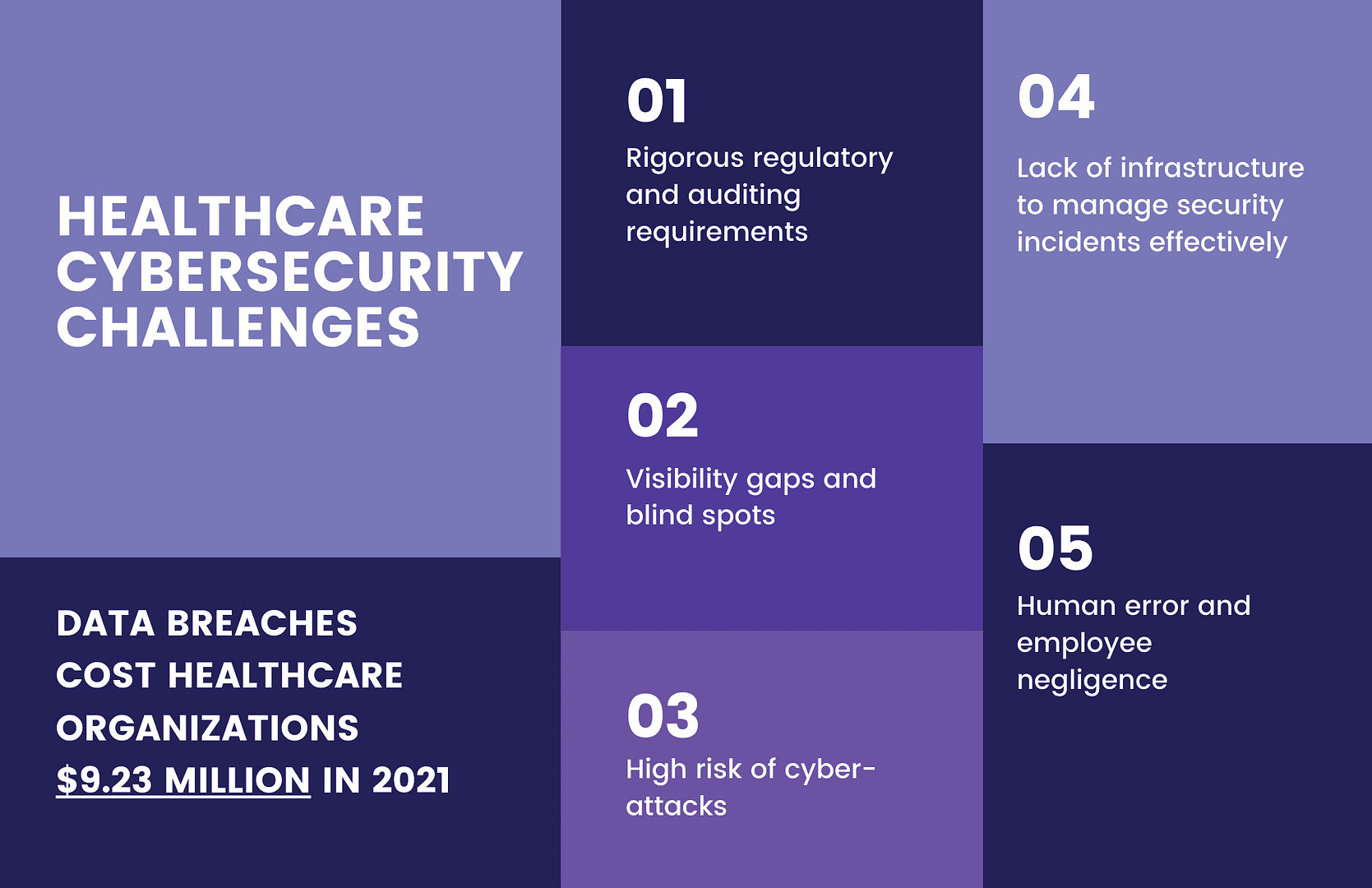The healthcare sector has a problem. It’s trying to innovate, embrace new ways of working and adopt the cloud. To an extent, it’s doing this successfully but, then, when we look at data breach figures we see that, for many companies, this innovation is coming at a cost.
For the last ten years, the healthcare industry has consistently suffered the highest data breach costs, reaching $7.13 million in 2020 and a staggering $9.23 million in 2021. That’s a 29.5% increase!
These findings indicate that something is clearly going amiss in healthcare. Put simply, organizations are failing to protect patient data, leading to data leaks, data theft and costly compliance fines under HIPAA.
Why are data breaches so common in the healthcare sector?
The healthcare industry faces rigorous regulatory and auditing requirements due to the sensitive nature of the data it handles. Regulators are unlikely to forgive mistakes or negligence with patient data, which is likely why fines in this sector are so high.
As well as this, healthcare organizations often struggle to shift from legacy technologies to emerging ones. This transition can often create visibility gaps and blind spots, which increases the likelihood of a data breach.
Research also shows that healthcare organizations lack the infrastructure to manage security incidents effectively. It takes healthcare institutions on average just under a year to identify and contain a breach, which is clearly at odds with HIPAA’s 60 day notification period.
Then, there are those challenges that all organizations face. Human error, for example, can lead to successful phishing and ransomware attacks. Plus, if an employee shares data with the wrong person, this could be enough to illicit a HIPAA fine. Moreover, healthcare employees are often time-pressured and stressed. 57% admit that, if security gets in the way of them doing their job, they will find a workaround.
Lastly, we must also remember that cybercriminals will target healthcare organizations on purpose. Because healthcare organizations provide critical services, cybercriminals know that they will be more likely to comply with their demands.

The cloud takes security challenges to a whole new level
Today, 80% of healthcare data passes through the cloud. Tele-consultations, mobile applications and internal collaboration tools are all on the rise. These services are all cloud-based. They’re great for improving the patient experience and employee collaboration, but they also increase the risk of data loss.
For example, with employees often using their own devices for work, it’s harder for IT teams to keep track of where sensitive data is and who has seen it. Many IT teams also don’t have the tech capabilities to see what information is being shared in collaboration tools like Teams and Slack. This is a compliance violation waiting to happen.
Ultimately, the problem with the cloud in healthcare is that organizations have surged forward with adoption without ensuring adequate security and visibility. PHI is being created, modified and transferred without the IT team’s knowledge.
Five ways DLP helps secure healthcare data
All of this isn’t to put healthcare organizations off using the cloud. We agree that the cloud is the future of healthcare. But, you need to make sure you are using it securely.
As well as investing in cloud technologies, you must invest in cloud security. Native data security tools in apps like Slack and Google aren’t granular enough for HIPAA requirements. You need to look at a third-party, cloud-based data loss prevention tool (DLP).
Cloud DLP can help you to discover and protect PHI/PII across your cloud environments. Using Cloud DLP is like shining a light on the blind spots we mentioned earlier, giving you unparalleled visibility and control over your data flow.
Cloud DLP isn’t just passive, though. As well as knowing where your data is, it will help you to secure it adequately. With functionalities like redaction, encryption, data masking, minimization and authorization, cloud DLP ensures that only those with the proper clearance levels get to see sensitive data.
Cloud DLP is also great for ensuring employee productivity. Rather than focusing on protecting a system, cloud DLP is data-centric. This means that it protects data, no matter where your employees’ access it from. For the user experience, cloud DLP works seamlessly behind the scenes, so your employees won’t even notice it.
Below, we’ll take a closer look at DLP’s use cases for PHI.
Uphold data security
HIPAA puts strict rules in place about what health data can leave an organization’s network–with requirements for encryption and data access on a need to know basis only.
However, as employees use unsanctioned cloud applications more and more, they may share sensitive data without the IT team even knowing. For example, they could send a folder over WhatsApp for ease of use or even use a site like WeTransfer to share a large file.
This practice can quickly get out of control if you don’t have the right tools in place. Luckily, cloud DLP can save the day. Cloud DLP will automatically inspect cloud applications to identify PHI in files, documents, and messages using data classification and artificial intelligence. It will then take automatic action to ensure that this data is not shared or used by the wrong person.
Secure BYOD
Healthcare workers increasingly work from home and the hospital and the office, sometimes using their own devices for work. This creates another blind spot, however. Healthcare IT teams need a way to ensure that sensitive data isn’t being illegally transferred.
Agent-less, cloud DLP models provide this granular visibility, offering data protection on unmanaged devices without installing an invasive piece of software on the end user’s device.
Meet compliance
An excellent cloud-based DLP solution like Polymer DLP will monitor, record and log the data journey of your PHI. Not only does this help your healthcare IT team to make security improvements, but it makes the auditing process much more accessible–the hard work is already done for you!
Stop hackers in their tracks
Cloud DLP solutions use user behavior analytics and access policies to ensure that only verified and legitimate users access sensitive data. This means that if a hacker can breach your network, it will be difficult for them to steal sensitive data without sounding an alarm.
Combat human error
Best-in-breed DLP solutions aim to help your employees become more security-conscious. They integrate nudges and reminders into the daily workflow, highlighting to users if they are about to take a ‘risky’ security action.
Over time, these reminders can help build a security-focused culture in your organization.
Ultimately, as you move forward with the cloud in healthcare, you need to make sure you have cloud DLP in place. This will ensure compliance with HIPAA, reduce the likelihood of a successful cyber attack and tackle instances of human error.










